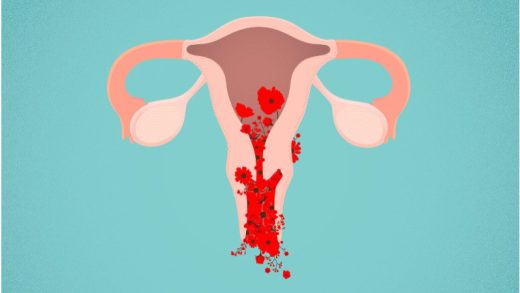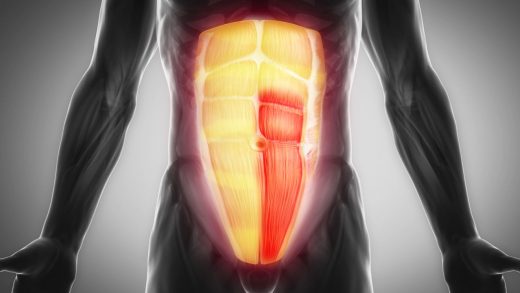What is abdominal compartment syndrome?
Critically sick patients may experience abdominal compartment syndrome (ACS), a medical emergency. It occurs when dangerously high levels of abdominal edema and pressure are reached.
The normal intra-abdominal pressure (mmHg) is in the range of 0 to 5 mmHg. The range in critically ill patients is 5–7 mmHg. One way to characterize high intra-abdominal pressure is:
- Intra-abdominal hypertension (IAH), in which pressure is 12 to 20 mmHg.
- Abdominal compartment syndrome (ACS), in which pressure is higher than 20 mmHg.
Abdominal compartment syndrome can prevent your organs and muscles from getting enough blood and oxygen. This can lead to multi-organ failure and death, so it must be recognized and treated quickly.
Is abdominal compartment syndrome common?
Abdominal compartment syndrome is rare. It’s most often limited to people in critical condition in the hospital, usually the intensive care unit.
Symptoms and Causes
What causes abdominal compartment syndrome?
Abdominal compartment syndrome (ACS) occurs when bleeding or swelling causes pressure in your abdomen. Conditions that may cause such bleeding or pressure include:
- Extensive surgery in your abdomen.
- Infection in your abdomen.
- Intestinal obstruction (blockage).
- Large amount of IV fluids (called fluid resuscitation), often required for surgery or sepsis.
- Major burns.
- Massive blood transfusion.
- Pancreatitis.
- Rupture of an abdominal aortic aneurysm (a bulge in your aorta, the main blood vessel from your heart to your chest and belly).
- Trauma (injury) to your abdomen.
What are the symptoms of abdominal compartment syndrome?
Abdominal compartment syndrome symptoms frequently manifest later, after the condition has already done harm. Medical professionals need to keep a close eye on patients who could develop abdominal compartment syndrome.
Signs and symptoms may include:
- Swollen, tight belly (abdominal distension).
- Abdominal pain.
- Difficulty breathing.
- Low blood pressure (hypotension).
- Low pee (urine) output (oliguria).
Diagnosis and Tests
How is abdominal compartment syndrome diagnosed?
People with abdominal compartment syndrome (ACS) may have:
- Low blood pressure.
- Low urine output.
- High peak pressures on a ventilator.
But the only way to confirm the diagnosis of ACS is to measure intra-abdominal pressure. Your healthcare provider will diagnose ACS if the pressure is higher than 20 mmHg and there’s evidence of organ failure.
The current method for measuring intra-abdominal pressure is to measure bladder pressure. Your healthcare provider will:
- Insert a thin, flexible tube (catheter) into the tube that transports urine out of your body (urethra).
- Advance the catheter to your bladder.
- Attach the catheter to a bag of fluid.
- Use a syringe to inject the fluid into your bladder.
- Measure the pressure.
This test will be repeated so your healthcare team can tell if the condition is getting worse or better.
Your healthcare provider may also order certain tests to determine whether your organs are malfunctioning. These test may include:
- Blood tests: Blood tests can measure certain chemicals and gasses in your body. For example, a creatinine clearance test can measure your kidney function.
- Imaging tests: Imaging tests can provide pictures of the inside of your abdomen. For example, a CT scan or abdominal ultrasound.
- Oxygen saturation: This test uses a simple clamp on the outside of your finger to see whether your body is getting enough oxygen.
Management and Treatment
How is abdominal compartment syndrome treated?
Surgical abdominal decompression is the most effective treatment for abdominal compartment syndrome. The decompressive laparotomy procedure will be carried out by your surgeon. Your skin and abdominal wall will be cut in order to release pressure and open the area.
The hours following surgery see a decrease in intra-abdominal pressure. However, it might take a few days for the pressure to drop to almost normal. Until then, the incision might not be completely closed. Recurrence of abdominal decompression surgery may be necessary in some cases.
Prevention
Can abdominal compartment syndrome be prevented?
It is possible to treat intra-abdominal hypertension (IAH) without surgery. Treatments without surgery could prevent abdominal compartment syndrome from developing from IAH. These could consist of:
- Changing body positions to reduce pressure and make you more comfortable.
- Water pills (diuretics) to help your body get rid of excess fluid.
- Draining fluids from your abdomen through a tube.
- Emptying contents of your bowel (intestine) to relieve pressure and make more room in your abdomen.
- Managing pain with medications.
- Restricting fluids.
Outlook / Prognosis
What is the outlook for people with abdominal compartment syndrome?
Abdominal compartment syndrome is lethal if left untreated. As the pressure inside your abdomen rises, more and more organs eventually shut down. Delays in diagnosis and treatment also have a bad prognosis.
However, abdominal compartment syndrome is eventually curable with prompt diagnosis and treatment.
Recovery from the original health problem can take weeks or months longer than ACS. You may need:
- Dialysis to do the work of your kidneys.
- Extended hospital stays.
- Fluid restrictions or diuretics.
- Heart monitoring.
- Mechanical ventilation to breathe.
A note from DocAdvice
A medical emergency known as abdominal compartment syndrome can strike patients who are seriously ill. It occurs when levels of abdominal swelling and pressure are dangerously high. Severe complications and death can be avoided with early diagnosis and treatment.




















